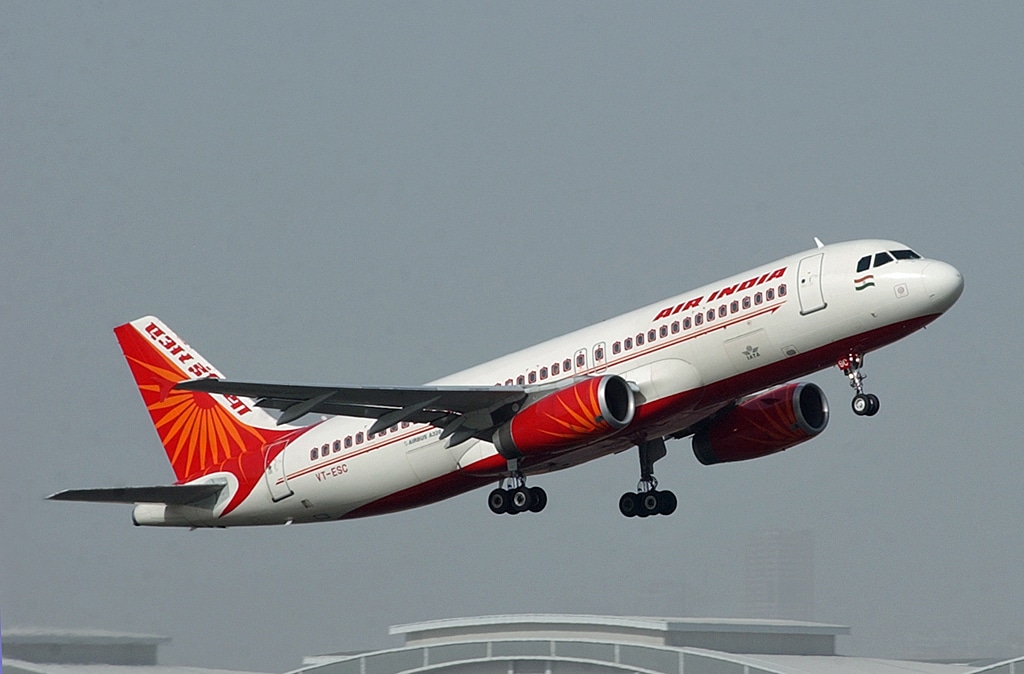Aerospace
How one announcement made by Air India captures global interest & The significance for aviation.

India’s position in the aviation industry has significantly changed. Huge planes have been ordered by Tata-owned Air India for its anticipated expansion of operations in the domestic and international markets. Significant orders in various areas will benefit the Indian sector in a variety of ways.
Employment Boost.
According to the most recent research, Air India creates a large number of jobs in addition to providing transportation services to India, likely throughout the world.
To operate the 470 planes that Air India will get in the next few years from Airbus and Boeing, the airline will require more than 6,500 pilots. In an effort to grow both its fleet and operations, the airline has put orders for the acquisition of 840 aircraft overall, with the option to buy an additional 370 aircraft. one of the biggest aircraft purchases made by a ship.
Although Air India now employs 1,600 pilots to operate its 113 aircraft, there have lately been instances where ultra-long distance flights have been canceled or delayed as a result of a staff shortage.
It can produce around 23500 workers for the grand total handling, and an additional 10,000 workers will be connected for direct employment with Air India.
Aerospace Boost
While Boeing and Airbus were previously waiting for orders, they currently have large orders that will take them five years to complete and deliver all the aircraft. Yet, the sector of aircraft production also generates employment for the USA, UK, and European regions. Also, Boeing received tremendous confidence in the B737 Max orders, which were underappreciated following the tragedy. Nevertheless, thanks to Air India’s order, Boeing is steadily regaining confidence in the aircraft.
Helping Tourism.
As everyone is aware, Air India consistently represents the national culture, and the TATA founder introduced it when it was first established.
In order to continue the tradition, Air India is also bringing a new level of attention to India, empowering the tourism industry, and facilitating simple access for various nations via a single window mode. The airlines are entirely focused on connecting people within their own countries.
Total orders.
According to the needs of its long-haul and short-haul flight operations, Air India has segmented its fleet of aircraft. For long-haul flights, it has specifically ordered the A350 and B777x, the newest aircraft that is best suited for passenger comfort and requires less maintenance. Also, some Airbus A321LRs, which are utilized for long-distance travel and have medium passenger seats, have been purchased.
Airbus
- 140 A320neo
- 70 A321neo
- 34 A350-1000
- 6 A350-900
Boeing
- 190 737 MAX (+50 options)
- 20 787 (+20 options)
- 10 777X
Strong aviation competition
Air India will be the greatest rival for local airline operators like Indigo, Spice Jet, Go Air, and Akasa, who may also feel pressure from the expansion of domestic airline operations.
With the help of Turkish Airlines, Indigo, which has a market share of more than 50%, has already begun to explore the global network. Terms of the air India brand, it will create international low-cost carriers.

Aerospace
Boeing Transfers Rocket Stage to NASA, Paving Way for Human Moon Mission

Boeing has achieved a significant milestone by providing NASA with the second core stage of the Space Launch System (SLS) rocket.
This crucial component, crafted at NASA’s Michoud Assembly Facility (MAF), is set to propel the Artemis II crew into lunar orbit, marking humanity’s return to deep space after a 50-year hiatus.
The monumental Boeing-built rocket stage, the largest element of the Artemis II mission, will embark on a journey aboard the Pegasus barge, traveling 900 miles to NASA’s Kennedy Space Center.
Comparison of two legendary aircraft B777x vs B747 aircraft:Click here
Upon arrival, it will be meticulously integrated with other essential Artemis II components, including the upper stage, solid rocket boosters, and NASA’s Orion spacecraft within the iconic Vehicle Assembly Building. This intricate integration process is a vital step toward the eagerly anticipated Artemis II launch, slated for 2025.
“Boeing-built products helped land humankind on the moon in 1969, and we’re proud to continue that legacy through the Artemis generation,” remarked Dave Dutcher, vice president and program manager for Boeing’s SLS program. “Together, with NASA and our industry partners and suppliers, we are building the world’s most capable rocket and paving the way to deep space through America’s rocket factory in New Orleans.”
NASA, Lockheed Martin Reveal X-59 Quiet Supersonic Aircraft:Click here
The delivery of Core Stage 2 marks a significant achievement in the evolution of the SLS rocket. Towering over 200 feet and powered by four RS-25 engines, this core stage, coupled with two solid-fueled booster rockets, will generate a staggering 8.8 million pounds of thrust. This immense power is crucial to launching Artemis II and future missions into the vast expanse of space.
The SLS rocket stands unparalleled in its capability to transport both crew and substantial cargo to the moon and beyond in a single launch. Its extraordinary capacity will facilitate the delivery of human-rated spacecraft, habitats, and scientific missions to destinations including the moon and Mars, ushering in a new era of space exploration.
-

 Travel1 week ago
Travel1 week agoAir India to Expand US Operations with Three New Routes After a Decade
-

 Travel2 weeks ago
Travel2 weeks agoWhy We Should Avoid These Stamps in a Passport
-

 Airlines1 month ago
Airlines1 month agoInvestigations Reveal Fake Chinese Titanium in Boeing and Airbus Jets
-

 Tech4 weeks ago
Tech4 weeks agoChina’s CATL Plans 1,800-Mile Electric Plane Launch by 2027
-

 Airport3 days ago
Airport3 days agoTop 10 Largest Airports in the World by Size
-

 Aerospace4 weeks ago
Aerospace4 weeks agoChina’s Fighter Jets Turn Wings into Autonomous Drones
-

 Airlines4 days ago
Airlines4 days agoAir India Rolls Out A350s for Delhi-New York JFK and Newark Routes
-

 Defence3 weeks ago
Defence3 weeks agoBoeing Enhances Chinook with New Engines and Block II Upgrades at $96 Million







